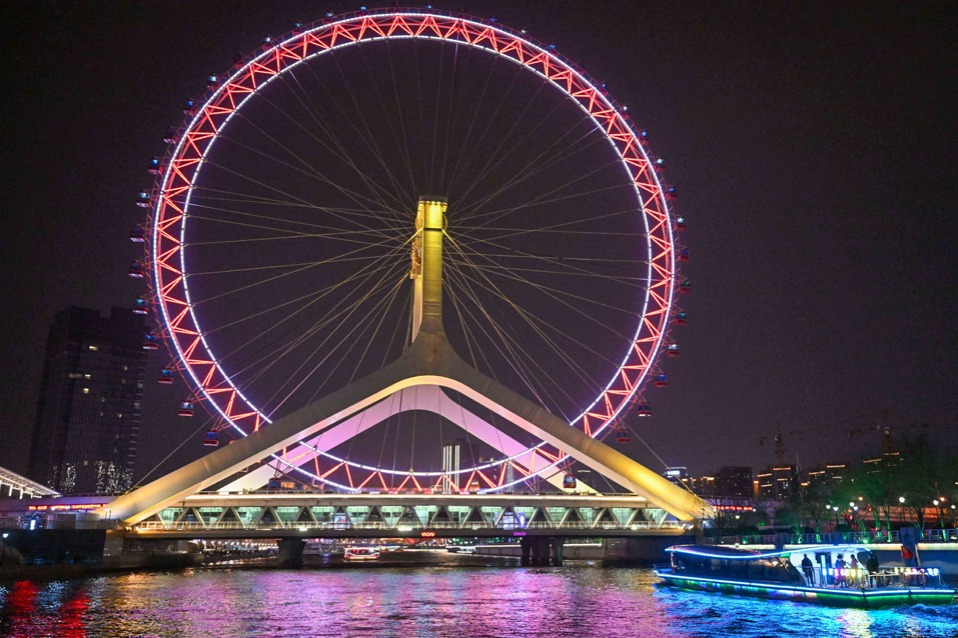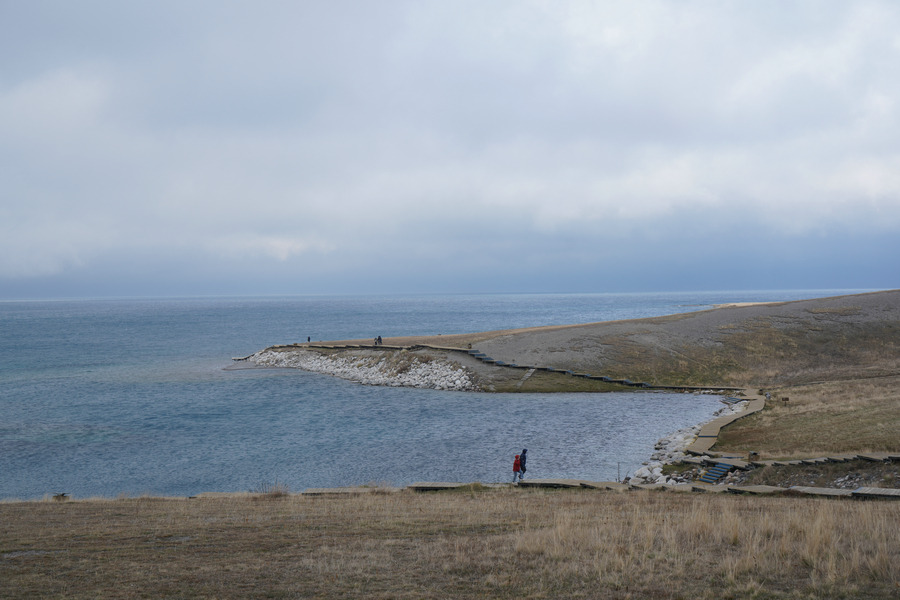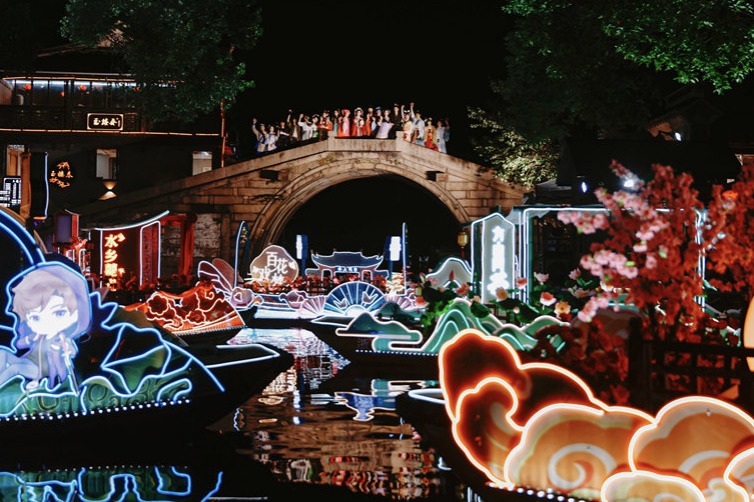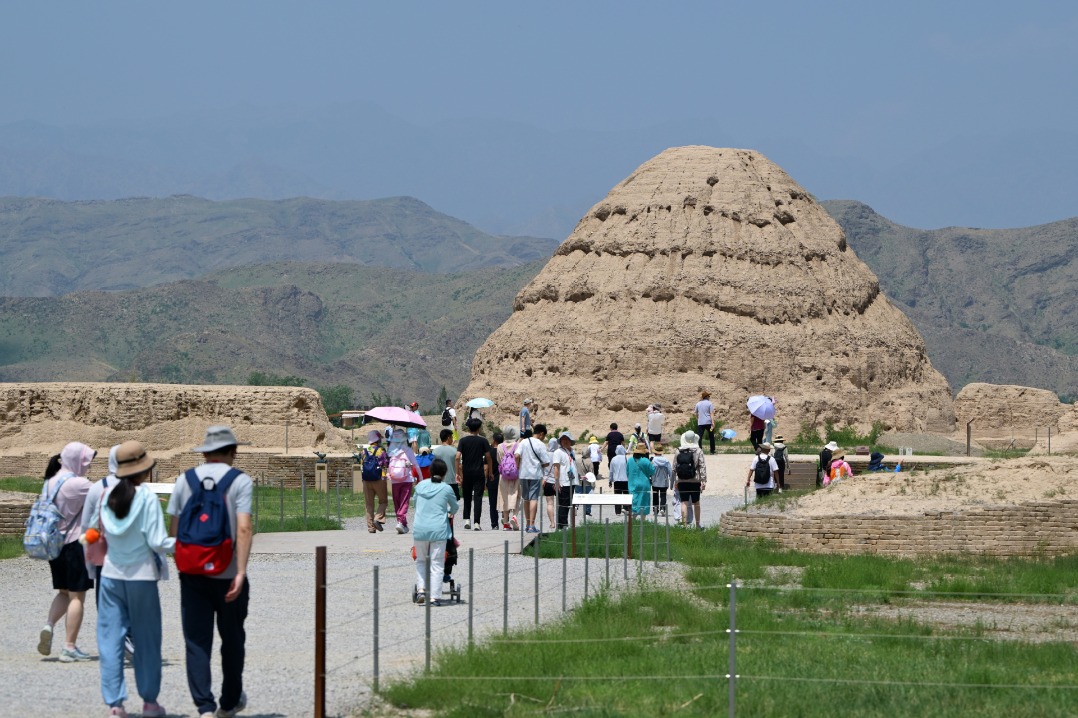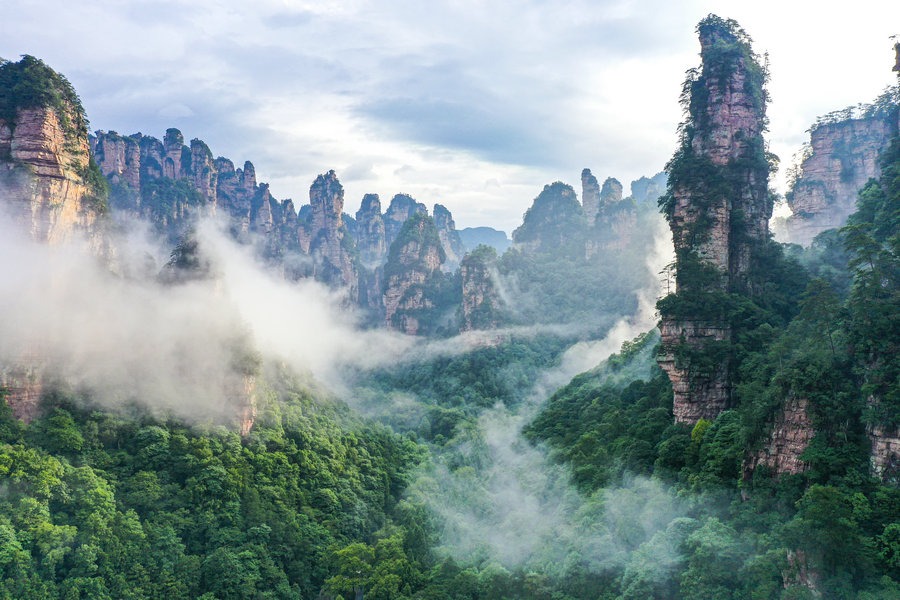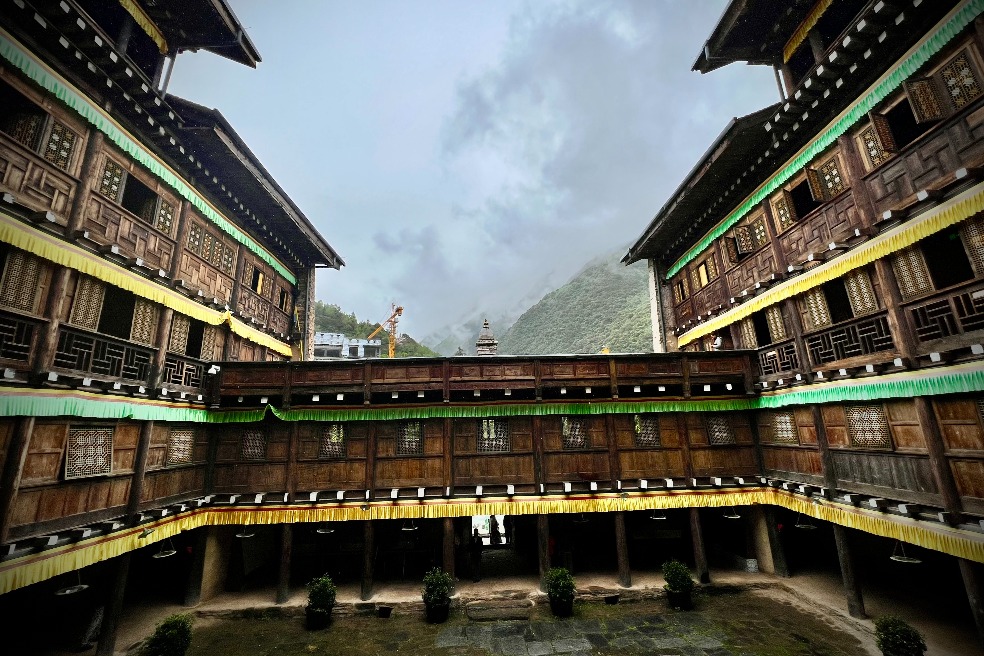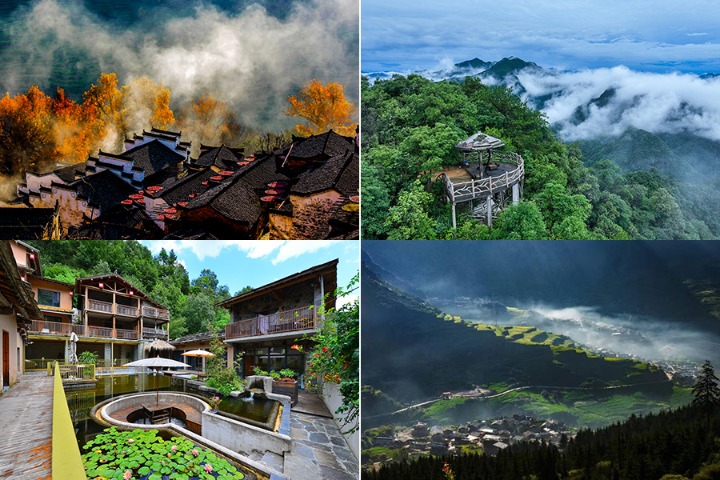A manor of memory, a manner of power

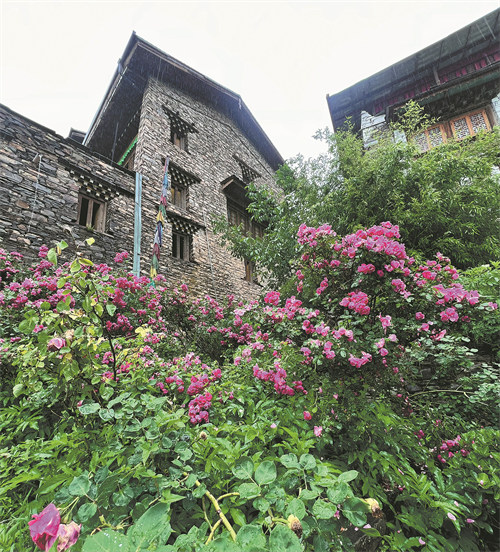
The ascent to the fifth floor culminates in a sacred apex — the ruling family's private monastery, which housed temples and monks from various Buddhist sects. The chieftains worshiped in ways that demonstrated impartiality toward the major denominations that flourished in the region. Temples on this floor accommodated the "red "Nyingma, or "old tantra", sect and the "yellow" offshoot, whose emphases on sutra, tantra and teaching endowed it with the name Gelug, meaning "good rules".
A skull symbolizing subjugation hangs above the entry to the Simhamukha Dakini Temple that venerates a Vajrayana yidam (meditative deity) believed to escort to paradise those who faithfully subject themselves to Buddha.
Three divinities who invoke long life — Amitayus, White Tara and the Mother of Victory — and a "yellow "wealth god emerge from the mural adorning the wall of the Longevity Palace, where the ruling families' monks recited sutras to pray for long and prosperous lives.
The nearby Mandala Temple venerates the sacred shape that symbolizes the celestial palaces of yidam. They're rendered as paintings, sand art and sculptures, including specimens carved in wood and stone and inlaid with precious metals and gems. The chieftains vacated Zhuokeji long ago, but the manor is still inhabited by their legacy. This abode of bygone rulers still stands as a citadel of memory.
Today, it reigns not over regional territory but rather the world of story. And that story is continuing to unfold from inside its gates to far beyond its walls and the borders of Barkam to captivate the wider world.

















